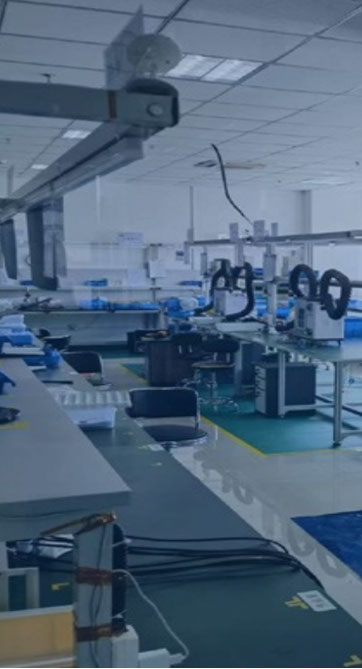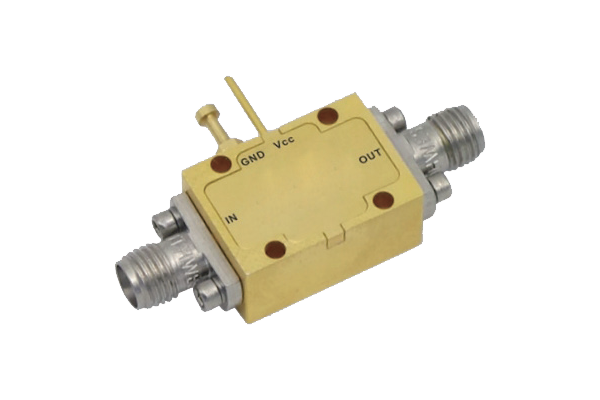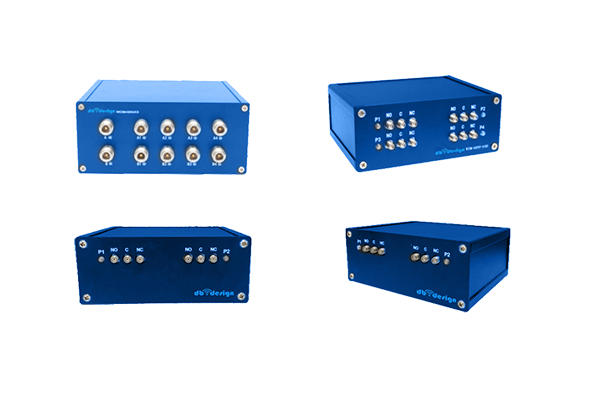
Pin diodes are established as major constituents in high-frequency electronics due to their natural device characteristics Their ability to operate with fast state changes and low capacitance while maintaining minimal insertion loss fits them to switching modulation and attenuation tasks. The fundamental operating principle of PIN diode switching rests on adjusting current flow with a control bias. The applied voltage modifies the depletion layer thickness at the p–n interface thus affecting conductivity. Modifying the applied bias permits PIN diodes to function at high frequencies with minimal signal distortion
When precise timing and control are needed PIN diodes are frequently embedded within advanced circuit configurations They can serve in RF filter networks to selectively transmit or block specific frequency ranges. Additionally their ability to handle elevated power levels makes them fit for amplifier power divider and generator circuits. The push for compact efficient PIN diodes has led to broader use in wireless communications and radar systems
Analyzing the Performance of Coaxial Switch Designs
Coaxial switch design is a sophisticated process involving many important design considerations Coaxial switch effectiveness depends on the switch kind frequency of operation and insertion loss metrics. Designs should focus on cutting insertion loss and increasing isolation to improve switch performance
Analyzing performance involves measuring important parameters like return loss insertion loss and port isolation. Metrics are assessed using simulation tools theoretical modeling and laboratory measurements. Rigorous performance analysis is necessary to secure dependable coaxial switch operation
- Simulations combined with analytic methods and practical experiments are standard for coaxial switch evaluation
- Temperature fluctuations impedance mismatch and manufacturing inconsistencies can strongly alter switch performance
- Contemporary advances and emerging developments in coaxial switch engineering seek improved metrics with smaller size and reduced power
LNA Design for Maximum Fidelity
Achieving high LNA performance efficiency and gain is critical for exceptional signal fidelity in many use cases Achieving results demands careful transistor picks optimized bias settings and considered topology design. A robust LNA layout minimizes noise inputs while maximizing amplification with low distortion. Analytical and simulation tools are vital for studying how design variations affect noise. Striving for a minimal Noise Figure assesses success in retaining signal power while limiting noise contribution
- Selecting devices that exhibit low intrinsic noise is a primary consideration
- Setting proper and optimal bias parameters is necessary to suppress noise in active devices
- Circuit topology significantly influences overall noise performance
Implementing matching networks noise reduction strategies and feedback control enhances LNA outcomes
RF Routing Strategies with PIN Diode Switches

Pin diode switch arrangements provide adaptable and low-loss routing for RF signal management Their high-speed switching lets systems dynamically alter signal routing in real time. A major advantage of PIN diodes is low insertion loss and high isolation which reduces signal degradation. Use cases include antenna selection duplexer networks and phased array antennas
A control voltage governs resistance levels and thereby enables switching of RF paths. In its open state the diode’s resistance is high enough to stop signal flow. Introducing a positive control voltage reduces resistance and opens the RF path
- Moreover furthermore additionally PIN diode switches provide quick switching low energy use and small form factors
Multiple architectures designs and configurations of PIN diode switch networks can be constructed to deliver advanced routing functions. Connecting several switches allows creation of dynamic matrices that support flexible signal path configurations
Performance Assessment for Coaxial Microwave Switches

The evaluation assessment and testing of coaxial microwave switches is essential to confirm optimal operation in complex electronic systems. Several influencing factors such as insertion reflection transmission loss isolation switching speed and frequency range determine performance. Complete assessment involves quantifying parameters over diverse operational and environmental test conditions
- Moreover additionally furthermore the evaluation ought to include reliability robustness durability and environmental tolerance considerations
- Ultimately the results of a well conducted evaluation provide critical valuable and essential data to guide selection design and optimization of switches for specific applications
Extensive Review on Minimizing Noise in LNA Designs
LNAs serve essential roles in wireless RF systems by amplifying weak signals and curbing noise. The review supplies a broad examination analysis and overview of methods to diminish noise in LNAs. We investigate explore and discuss critical noise mechanisms like thermal shot and flicker noise. We further analyze noise matching feedback topologies and bias optimization strategies to suppress noise. This review spotlights recent developments like new materials and inventive circuit designs that improve noise figures. By providing insight into noise minimization principles and practices the review supports researchers and engineers working on high performance RF systems
High Speed Switching Roles of PIN Diodes

PIN diodes possess remarkable unique and exceptional traits that fit them well for high speed switching systems Small capacitance together with low resistance enables rapid switching to satisfy precise timing needs. PIN diodes’ adaptive linear voltage response permits precise amplitude modulation and switching. Their adaptability flexibility and versatility qualifies them as suitable applicable and appropriate for broad high speed uses Examples of deployment include optical communication systems microwave circuits and signal processing equipment and devices
Coaxial Switch Integration and IC Switching Technology
Integrated circuit coaxial switch technology marks a significant advancement in signal routing processing and handling within electronic systems circuits and devices. These specialty ICs are engineered to control manage and direct signal flow through coaxial cables offering high frequency performance and low latency propagation insertion times. The miniaturized nature of IC technology produces compact efficient reliable and robust designs suitable for dense interfacing integration and connectivity demands
- By rigorously meticulously and carefully implementing these techniques practitioners can achieve LNAs with remarkable noise performance for sensitive reliable electronics With careful meticulous and rigorous execution of these strategies designers can obtain LNAs exhibiting excellent noise performance for sensitive reliable systems low-noise amplifier By meticulously carefully and rigorously applying these methods developers can produce LNAs with superior noise performance enabling sensitive reliable electronics With careful meticulous and rigorous deployment of these approaches developers can accomplish LNAs with outstanding noise performance enabling trustworthy sensitive electronics
- Use cases include telecommunications data communications and wireless network infrastructures
- Integration of coaxial switch ICs serves aerospace defense and industrial automation industries
- Application examples include consumer electronics audio video products and test measurement systems
Low Noise Amplifier Design for mmWave Systems

LNA design at millimeter wave frequencies faces special challenges due to higher signal attenuation and amplified noise impacts. Parasitic capacitance and inductance play a dominant role at mmWave and necessitate precise layout and component choices. Minimizing input mismatch and maximizing power gain are critical essential and important for LNA operation in mmWave systems. Selecting the right active devices including HEMTs GaAs MESFETs and InP HBTs helps secure low noise figures at mmWave. Additionally the development implementation and optimization of matching networks plays a vital role in efficient power transfer and impedance matching. Attention to package parasitics is crucial as they have potential to harm mmWave LNA performance. Implementing low-loss transmission lines along with proper ground plane design is essential necessary and important for reducing reflection and ensuring bandwidth
Modeling Strategies for PIN Diode RF Switching
PIN diodes serve as important components elements and parts within a variety of RF switching applications. Accurate precise and detailed characterization of these devices is essential for designing developing and optimizing reliable high performance circuits. The work involves analyzing evaluating and examining electrical characteristics like voltage current resistance impedance and conductance. Also measured are frequency response bandwidth tuning abilities and switching speed latency or response time
Additionally moreover furthermore the development of precise models simulations and representations for PIN diodes is critical essential and vital for predicting behavior in complex RF contexts. Numerous available modeling techniques include lumped element distributed element and SPICE approaches. Model selection is guided by specific application requirements and the desired required expected accuracy
Sophisticated Techniques to Achieve Minimal LNA Noise
LNA design is a critical undertaking that demands precise attention to topology and parts selection to achieve low noise. Recent emerging and novel semiconductor advances have opened the door to innovative groundbreaking sophisticated design techniques that cut noise significantly.
Key techniques include employing utilizing and implementing wideband matching networks incorporating low noise high gain transistors and optimizing biasing schemes strategies and approaches. Additionally furthermore moreover advanced packaging and thermal management techniques are important to lower external noise sources. By meticulously carefully and rigorously adopting these practices designers can deliver LNAs with excellent noise performance supporting reliable sensitive systems
